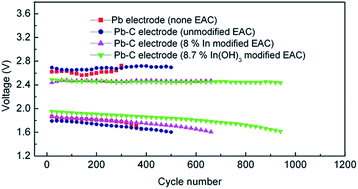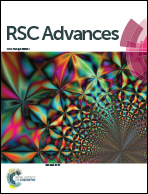Hydrogen evolution behavior of electrochemically active carbon modified with indium and its effects on the cycle performance of valve-regulated lead-acid batteries
Abstract
Electrochemically active carbon (EAC) was modified with In and In(OH)3 respectively. Its properties were characterized by TEM, EDS and XRD, and its hydrogen evolution behaviour and effects on the cycle life of valve-regulated lead-acid (VRLA) batteries were investigated. The study found that the modification of EAC with In or In(OH)3 did not significantly influence the crystal structure and surface morphology of EAC, but it can effectively increase the overpotential of hydrogen evolution and decrease the evolution rate of hydrogen on EAC. It is also observed that the addition of EAC modified with an appropriate amount of In or In(OH)3 in the negative plates of VRLA batteries can remarkably decrease the evolution rate of hydrogen and prolong the cycle life of batteries under high-rate partial-state-of-charge conditions. Moreover, in comparison with EAC modified with In, EAC modified with In(OH)3 showed better performance in terms of the improved cycle life of batteries.


 Please wait while we load your content...
Please wait while we load your content...